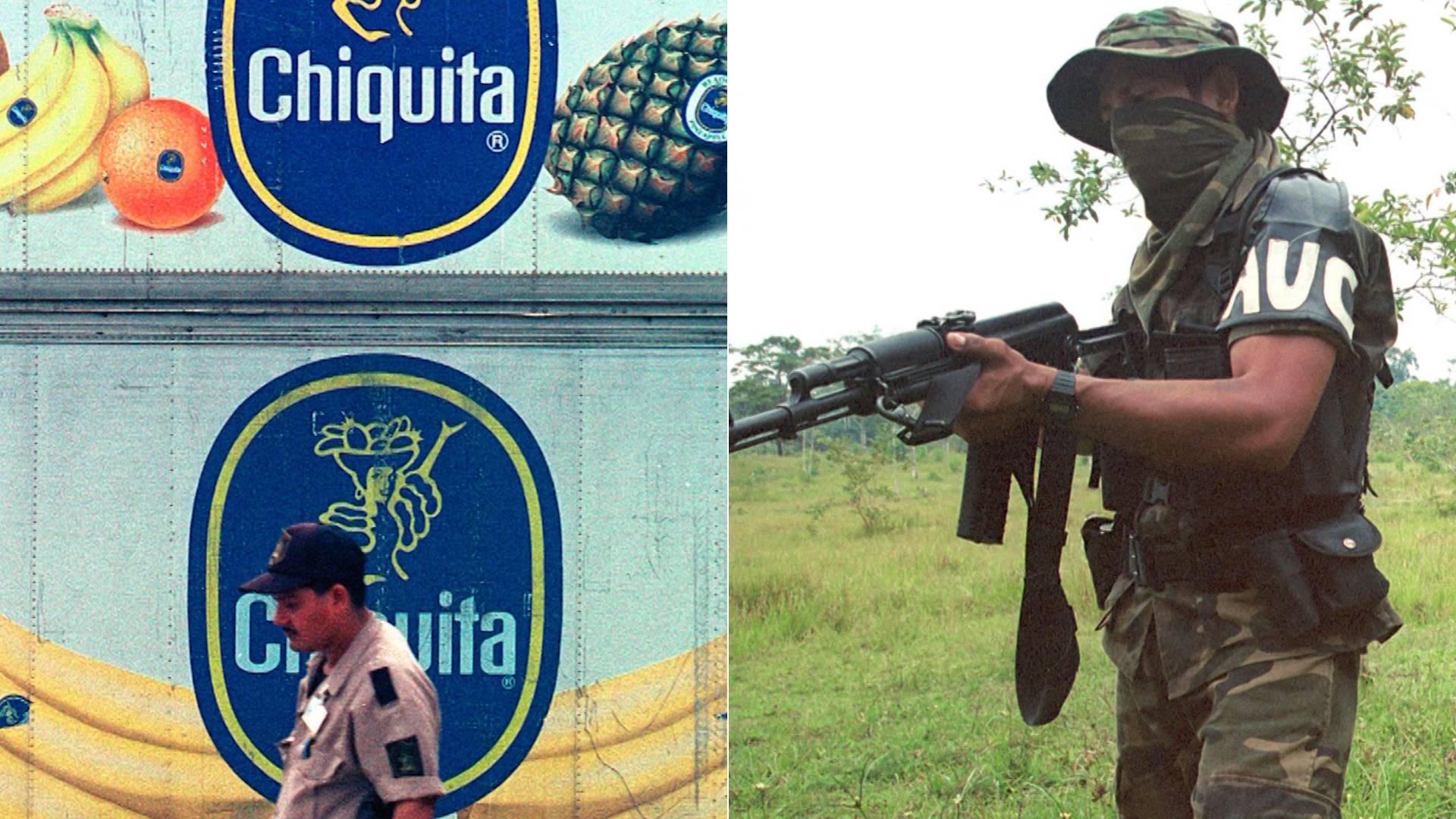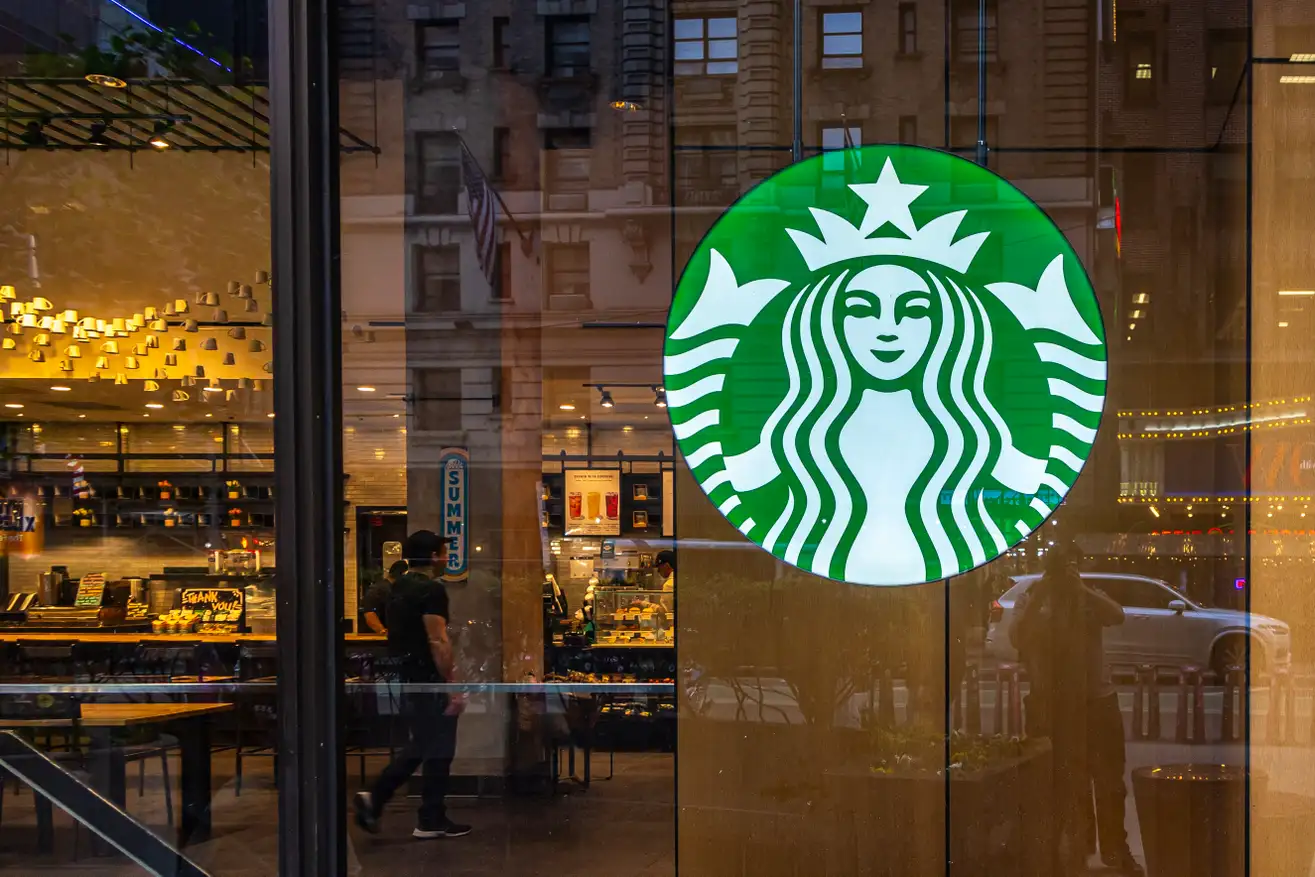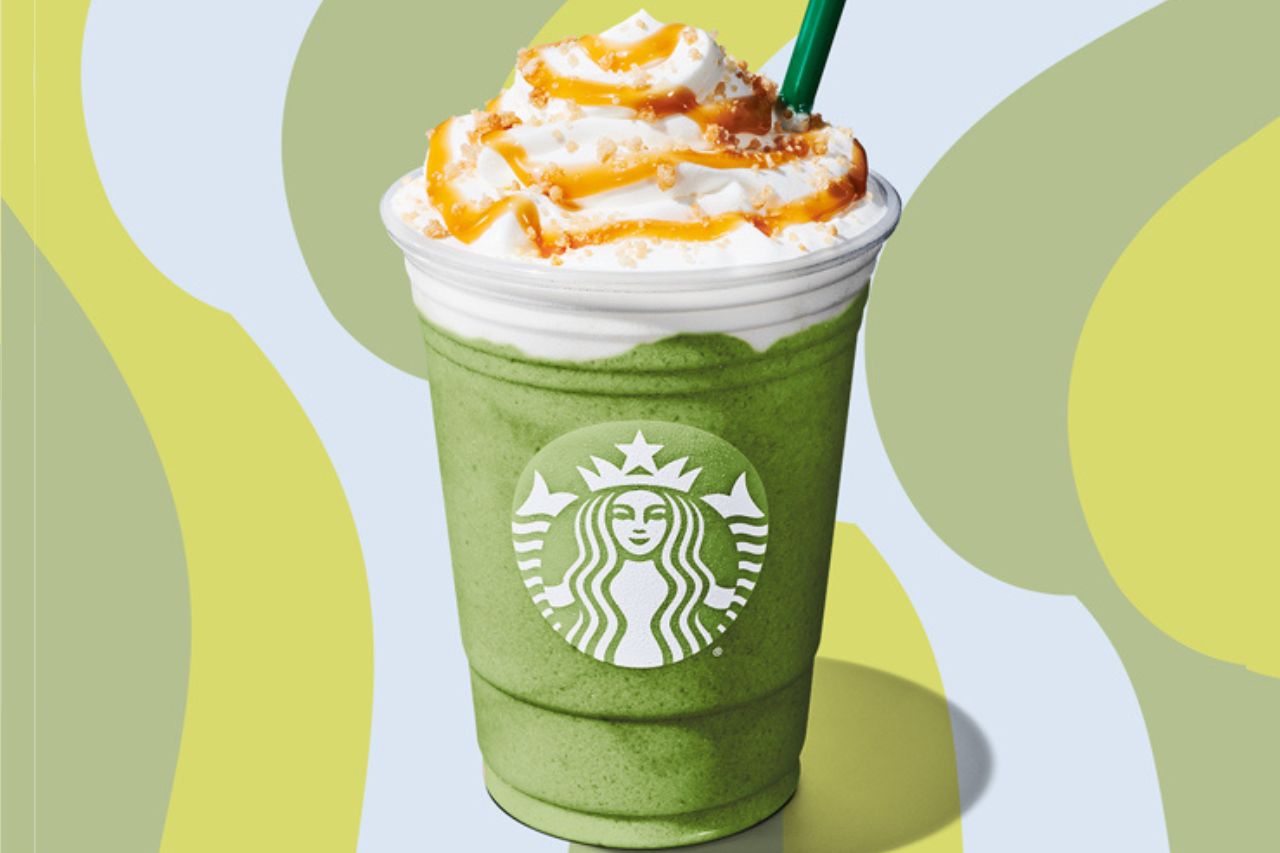Food
The Bloody History Behind The $38 Million Chiquita Verdict

In 1997, “David,” a worker on a banana plantation, was brutally and quickly executed by right-wing Colombian paramilitary groups.
He was taken off, beaten to death in front of his fellow passengers, and thrown on the side of the road, where his attackers covered his corpse with a banana plant, just minutes after his bus was halted at a checkpoint in the coastal district of Urabá. Court records stated that cows would later eat his corpse.
The violence persisted after that. A few weeks later, his sister-in-law and daughter vanished, never to be seen again. Another family member received death threats.
The family that remained quickly departed Urabá permanently.

Chiquita | CNN Image
The Bloody History Behind The $38 Million Chiquita Verdict
He was only one of thousands of victims targeted by the notorious right-wing terrorist organization known as the United Self-Defense Forces of Colombia, or AUC, which was able to muster tens of thousands of fighters during the height of Colombia’s civil conflict at the beginning of the new century.
“For the past 17 years, it has been an honor to represent these victims.” Simons stated during a press conference in Washington on Tuesday, “It’s not over yet, but this is a significant step forward, and we hope that this will pave the way for compensation for all the victims.”
Although Simons believes it is doubtful that any of the victims would get compensation anytime soon as a result of Chiquita’s appeal, he believes the case has sent a clear message to businesses about the need of upholding human rights.
In the end, the money won’t be able to make up for the loss. Even though we’re still discussing the horrifying mistreatment these families have endured, money matters because, regrettably, it’s the language that companies speak the best. According to Simons, sometimes a sizable financial fine is necessary to influence business conduct.
“Tragic in so many ways”
Chiquita has argued in its defense that it was a victim of its own actions because it was compelled to pay the AUC protection money, both in the current case and in earlier legal proceedings.
Even while the jury was not persuaded by that argument that it had behaved “as a reasonable businessperson would have acted under the circumstances,” the corporation told CNN that it was still “confident that our legal position will ultimately prevail” in the wake of the most recent verdict.
“Our thoughts and prayers are with the families of those who were directly impacted by the violence in Colombia, as well as the many others who found themselves in a tragic situation.” That does not, however, alter our conviction that these assertions lack a legitimate foundation,” the statement said.
The business acknowledged that it had made more than “100 payments to the AUC totaling over $1.7 million” in its 2007 lawsuit against the US Justice Department. According to a US Justice Department press release from the time, Chiquita documented the AUC payments as “security services,” despite the fact that the business never got any real services from these payments.
Before becoming US Attorney General under President Barack Obama, Eric Holder represented Chiquita in the 2007 trial. At the time, he informed the court that the company had to pay various terrorist organizations for more than 15 years because those organizations controlled the areas where the company operated. Not the government of Colombia.
However, in that trial, the company ultimately entered into a plea agreement acknowledging that, because of the protection money issue, it had voluntarily continued to pay the AUC even after the group was designated as a terrorist organization by the US government in 2001 and even after a senior director objected to Chiquita’s board reiterating “his strong opinion to sell our operations in Colombia.”

Chiquita | Dem Now Image
The Bloody History Behind The $38 Million Chiquita Verdict
Chiquita’s operations in Colombia yielded profits of $49.4 million between 1997 and 2004, according to the findings of federal attorneys.
A period of “true terror.”
The AUC was established in 1997, in the midst of one of the deadliest periods of the civil war in Colombia, when the government was fighting right-wing paramilitaries, left-wing guerrillas, and criminal groups for supremacy.
At that time, the civilian population was being terrorized by left-wing guerrillas from the National Liberation Army (ELN) and the Revolutionary Armed Forces of Colombia (FARC), who were fighting the government. Prior to turning to the AUC in 1997, Chiquita claimed in the 2007 case that it had paid ransoms to the ELN and the FARC.
Due to the threat of an armed communist revolution, right-wing supporters and landowners in Colombia organized vigilante organizations to match the guerrillas blow for blow. Until their ultimate demobilization in 2006, the AUC was one such group that terrorized the people of northern Colombia in an effort to put an end to the uprising.
When the AUC was at its strongest, it could muster tens of thousands of fighters and was mostly funded by drug trafficking; after demobilization, over a dozen AUC officials were deported to the US on drug-related charges.
“I recall that time; it was truly terrifying,” a plaintiff who received compensation on Monday told CNN. “You had victims all around town; not only was my husband killed, but my daughter was also raped.”
Another piece of evidence presented to the jurors in the most recent instance included a young girl who had been made to see her mother and stepfather being executed on the side of the road from a cab. She was then given the equivalent of less than one dollar so that she could go back home and live as an orphan.
Colombia, as of right now
The Colombia of today is very different from the Colombia of the AUC’s founding.
The 52-year struggle between the government and the FARC was resolved by a peace agreement in 2016, a few years after the AUC’s demobilization; however, some dissidents are still fighting.

chiquita | Earth Rights Image
The Bloody History Behind The $38 Million Chiquita Verdict
In an effort to put an end to some of the bloodiest chapters of the conflict, transitional justice procedures have since included both left- and right-wing guerrillas and paramilitaries.
Still, there is terror in Urabá.
A few ex-members of the AUC are still on the loose, having joined the Gulf Clan, a new organized crime gang that opposes government authority in northwest Colombia.
Rights organizations claim that strong corporate interests are still working with local governments and criminal organizations to suppress activism, especially when it comes to environmental protection, which can be a risky endeavor in South America.
Nevertheless, the court decision this week offers hope for at least some of the numerous AUC victims. In a show of defiance, one of the litigants who spoke with CNN sought to have her message shared.
“Mom don’t talk, mom don’t pick up the phone,” is what my son and daughter all say. However, fear is only permanent until a person chooses to express it,” she remarked.
SOURCE – CNN
Food
Taylor Port Launches Sentinels Vintage Port

Taylor Port has announced the launch of Taylor’s Sentinels Vintage Port, a blend of wines made from its assets in and around the Pinhao Valley.
The four estates—Terra Feita, Junco, Casa Nova, and Eira Velha—are all located inside the original 1756 border and have received Feitoria status, the highest certification for Tayor Port vineyards.
Sentinels derive their name from the granite pillars known as “Marcos de Vitoria” that guard the demarcation line that separates the top-grade Port sections and is home to numerous Taylor Port mansions. From 1758 to 1761, 335 stone stakes were constructed to designate this region.
Fruity
The Pinhão Valley style is rich, deep, and delicious, despite differences in altitude, orientation, sun, wind exposure, and grape variety mix throughout the estates.
Sentinels Vintage Port’s mix is based on ‘parcel selection’, a laborious procedure of selecting wines from specific plots on each estate. Like Taylor’s Single Quinta Vintage Ports, Sentinels Vintage Ports will be created in years when no traditional Taylor Port Vintage is produced.
Taylor Port Thrilled
These vintages produce wines that have the potential to age and improve in the bottle while remaining approachable and delicious while young.
Thrilled Taylor’s managing director, Adrian Bridge, said the company is “thrilled” to unveil the line.
He stated, “This publication demonstrates our dedication to creating excellent Ports that honour the legacy of our ancient lands. The Taylor’s Sentinel blend honours our heritage while demonstrating our commitment to quality.
Taylor’s head winemaker, David Guimaraens, described it as a “tribute to the unique terroir” of the Pinhão Valley.
He stated, “Each estate adds its own flavour to the blend, resulting in a nuanced and harmonious wine. It is a true expression of Taylor’s long legacy and precise craftsmanship.
Related News:
Brad Pitt And Angelina Jolie’s Winery Court Battle Heats Up
Food
Starbucks Is Making A Popular Add-On Free Of Charge

Starbucks drinks with soy, oat, almond, or coconut milk will no longer cost extra.
Starting next week, Starbucks customers will no longer be charged more for adding nondairy milk to their orders. According to the corporation, removing the non-dairy milk premium will result in customers paying around 10% less than they did previously.
In recent years, Starbucks has seen an increase in orders with milk replacements, similar to non-dairy alternatives in grocery shops. Starbucks began offering oat milk on its menu in 2021. After adding a shot of espresso, non-dairy milk is now the second most popular order change at Starbucks.
Starbucks Is Making A Popular Add-On Free Of Charge
Starbucks has significantly changed since new CEO Brian Niccol took over the troubled company in September.
Starbucks’ global revenues at outlets operating for at least a year fell 7% last quarter, while customer transactions decreased by 8%.
“Our financial results were very disappointing,” Niccol stated during the company’s quarterly earnings call. “It is clear we need to fundamentally change our strategy to win back customers and return to growth.”
Bringing back condiment stations and Sharpies.
Starbucks is moving swiftly under Niccol.
Starbucks is reducing promotional discounts through its mobile app to encourage customers to pay full price for its coffees and teas. Niccol aims to redefine Starbucks as a luxury brand that avoids discounting.
Despite reducing discounts, Niccol stated that the company had no plans to hike pricing next year. Starbucks has raised its costs in recent years, driving away some customers.
Starbucks also announced this week that it is removing its contentious olive oil-infused drinks from the menu, less than a year after its introduction.
The “Oleato” drinks will be removed from Starbucks’ menus in the United States and Canada beginning in early November as part of Niccol’s aim to simplify a menu he recently described as “overly complex.”
Starbucks Is Making A Popular Add-On Free Of Charge
In addition, Niccol stated on Wednesday that Starbucks intends to reinstate self-service condiment stations in locations. The business eliminated them at the start of the Covid-19 epidemic in 2020.
“Both our customers and our baristas say it would help them speed up orders,” he said.
Baristas who write customers’ names on drink orders in marker will also return as part of Niccol’s aim to create a coffeehouse ambiance at the business and give it a “human touch.”
Starbucks (SBUX) shares were steady during regular trading but rose 0.5% after hours.
SOURCE | CNN
Food
McDonald’s Quarter Pounder Back On The Menu After Testing Rules Out Beef Patties As E. Coli Source

Los Angeles —McDonald’s announced on Sunday that Quarter Pounders will be back on the menu at hundreds of its locations after testing ruled out beef patties as the cause of the E. coli outbreak linked to the popular burgers. The outbreak killed one person and affected at least 75 others in 13 states.
According to McDonald’s statement, the US Food and Drug Administration continues to believe that slivered onions from a single supplier are the most likely source of contamination. McDonald’s said it will resume selling the Quarter Pounder at affected restaurants—minus the slivered onions—in the next week.
As of Friday, at least 75 people in 13 states were sick, according to federal health officials. The Centers for Disease Control and Prevention said that 22 persons were hospitalized, two of whom suffered a serious kidney disease consequence. One person died in Colorado.
McDonald’s Quarter Pounder Back On The Menu After Testing Rules Out Beef Patties As E. Coli Source
Early FDA analysis revealed that the uncooked slivered onions used on the burgers “are a likely source of contamination. ” McDonald’s has confirmed that Taylor Farms, a California-based produce company, supplied the fresh onions used in the outbreak-affected locations, which came from a facility in Colorado Springs.
When the outbreak was revealed on Tuesday, McDonald’s removed the Quarter Pounder burger from menus in numerous states, primarily in the Midwest and the mountains. McDonald’s said on Friday that slivered onions from its Colorado Springs facility were supplied to about 900 of its restaurants, including those in transit hubs such as airports.
On Tuesday, the firm announced that slivered onions sourced from the factory were removed from its supply chain. McDonald’s will discontinue sourcing onions from Taylor Farms’ Colorado Springs factory “indefinitely.”
According to McDonald’s, the 900 McDonald’s restaurants that previously received slivered onions from Taylor Farms’ Colorado Springs facility will start selling Quarter Pounders without slivered onions.
McDonald’s reported that the Colorado Department of Agriculture’s testing ruled out beef patties as the source of the illness.
The Department of Agriculture acquired many fresh and frozen beef patties from various Colorado McDonald’s outlets linked to the E. coli inquiry. The department reported that all samples tested negative for E. coli.
While it is unknown whether the recalled onions were the source of the illness, numerous other fast-food restaurants, including Taco Bell, Pizza Hut, KFC, and Burger King, removed onions off their menus in specific areas this week.
As of Friday, Colorado had the most illnesses recorded, with 26. The CDC reported that at least 13 persons were affected in Montana, 11 in Nebraska, 5 in New Mexico and Utah, 4 in Missouri and Wyoming, 2 in Michigan, and 1 in Iowa, Kansas, Oregon, Wisconsin, and Washington.
McDonald’s stated Friday that it did not remove the Quarter Pounder from any further restaurants but that some occurrences in states outside the initial region were related to travel.
McDonald’s Quarter Pounder Back On The Menu After Testing Rules Out Beef Patties As E. Coli Source
According to the CDC, several persons who got sick reported traveling to other states before symptoms appeared. At least three persons reported eating at McDonald’s throughout their trip. Illnesses were reported from September 27 to October 11.
The outbreak is caused by infections with E. coli 0157:H7, a bacteria that produces a deadly toxin. According to the CDC, it causes over 74,000 infections in the United States each year, resulting in over 2,000 hospitalizations and 61 fatalities.
Symptoms of E. coli poisoning can appear fast within a day or two of eating contaminated foods. They often include fever, vomiting, diarrhea or bloody diarrhea, as well as indicators of dehydration such as decreased urination, increased thirst, and dizziness. The illness is particularly deadly for children under the age of five, the elderly, pregnant women, and those with compromised immune systems.
SOURCE | AP
-
Politics4 weeks ago
Miller Expects 4.9 Million Foreigners to Leave Canada Voluntarily
-
News4 weeks ago
Nolinor Boeing 737 Crash Lands in Montreal
-
News3 weeks ago
“Shocking Video” Vancouver Police Shoot Armed Suspect 10 Times
-
Tech4 weeks ago
Increasing its Stake in OpenAI by $1.5 Billion is a Possibility for SoftBank.
-
Tech4 weeks ago
Canadian Media Firms Are Suing OpenAI in a Potential Billion-Dollar Dispute.
-
Finance2 weeks ago
Chrystia Freeland Promises Mini-Budget By Dec 16th

























